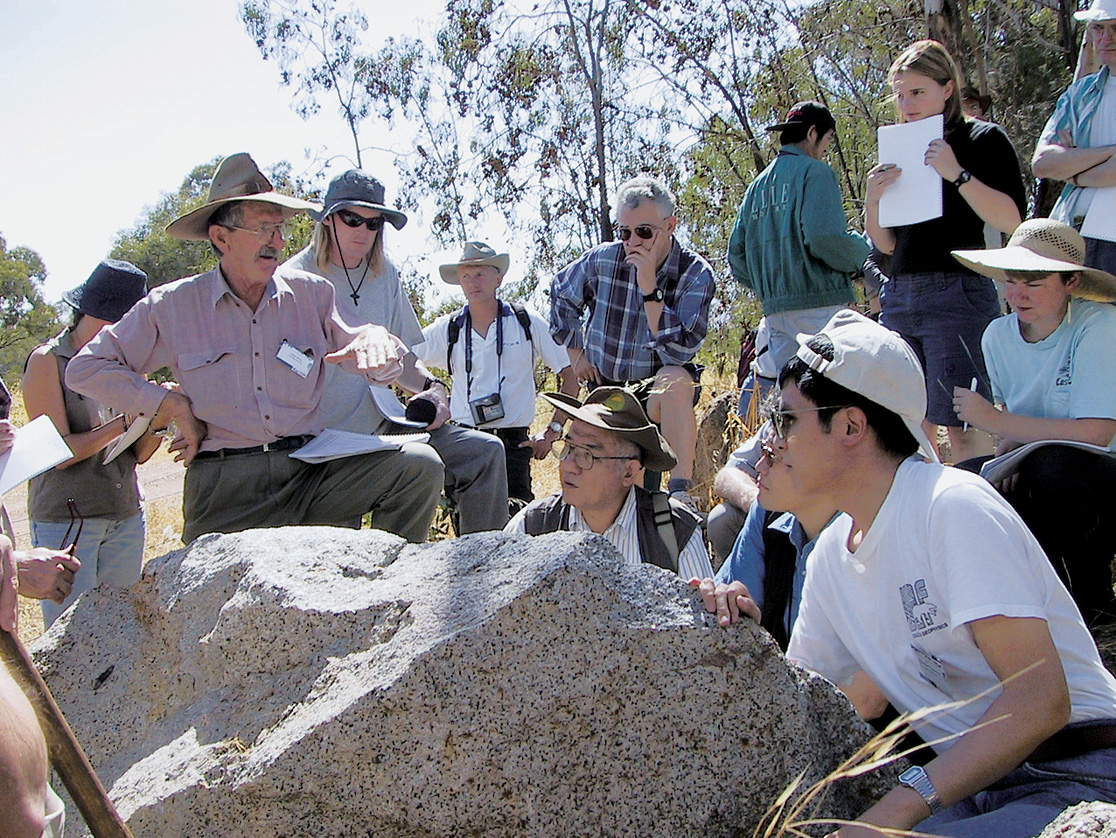Comprehensive List of Researchers "Information Knowledge"
Department of Complex Systems Science
- Name
- NAGAMINE, Koichiro
- Group
- Emergent Systems Group
- Title
- Associate Professor
- Degree
- Dr. of Science
- Research Field
- Geochemistry / Image Processing / Cartology

Current Research
Extracting and Analyzing Various Information in the Natural and Human Environments
Research OutlineSubstances in nature and systems in human society contain much information related to origins and properties. We extract various data from these substances and systems, analyze them, and then visualize the results to clarify origins and properties.
Research Themes
(1) Petrogenetic factors inferred from carbon-bearing gas compositions occluded in granitic rocks : Understanding the petrogenesis of granitic rocks is difficult. The redox condition of magma, a significant parameter for economic minerals, has been mainly inferred by mineralogical methods. We estimate petrogenetic factors from the composition of carbon-bearing gas species occluded in granitic rocks. We crush granite samples collected from Australia, Slovakia, and Japan in a sealed apparatus and analyze the discharged carbon-bearing gas species (CH4, C2H6, CO, CO2) by gas chromatography. If these species are in thermodynamic equilibrium in the process of petrogenesis, the partial pressure of oxygen and temperature can be estimated by comparing theoretical and analytical results.
(2) Analysis of polarizing microscopic images of rock sections : Observing thin sections of rock samples by polarizing microscopy is a very common method to clarify mineral distributions and various properties. Even experts, however, expend much effort and time identifying minerals and determining proportions by optical properties. We automate mineral identification by analyzing polarizing microscopic images taken by digital cameras. We developed an algorithm for identifying minerals and determining proportions by detecting pleochroism and interference colors in several thin section images taken from different angles with one nicol and with crossed nicols.
(3) Analysis of earth observation satellite images : Recently many earth observation satellites such as LANDSAT have been launched that simplify obtaining high-resolution satellite images. Maps are still indispensable for analyzing these images, and precise digital maps are becoming more common in addition to conventional paper topographic maps. We analyze satellite images for mapping land use more precisely by combining these images and digital maps.
(4) Comparison of Japanese and American address systems : The system of address expression is fundamentally different between Japan and most western countries. In Japan the system is based on a plane (block), while in the US it is based on a line (street). Due to this difference it is much easier to find a specific address in the US than in Japan. We determine which system is more reasonable from the viewpoint of informatics, although the difference might be derived from historical factors. We will choose several cities of similar size in Japan and in the US and compare the amount of information for expressing every address in these cities.

Figure : Granite research in Australia
Career
- Visiting researcher, 1997, University of Alaska, Fairbanks
- D. S., 1993, Graduate School of Science, Nagoya University
- Assist. prof., 1992, School of Engineering, Nagoya University
- M. S., 1988, Graduate School of Science, Nagoya University
- B. S., 1986, School of Science, Nagoya University
Academic Societies
- Geochemical Society of Japan
- Seismological Society of Japan
Publications
- Anomalously high b-values in the south flank of Kilauea volcano, Hawaii : evidence for the distribution of magma below Kilauea's east rift zone, J. Volcanol. Geotherm. Res. (106), 23-37 (2001).
- Evolution of light hydrocarbon gases in subsurface processes : Constraints from chemical equilibrium, Earth Planet. Sci. Lett. (133), 151-161 (1995).
- Origin and coseismic behavior of mineral spring gas at Byakko, Japan, studied by automated gas chromatographic analyses, Chem. Geol. (114), 3-17 (1994).








